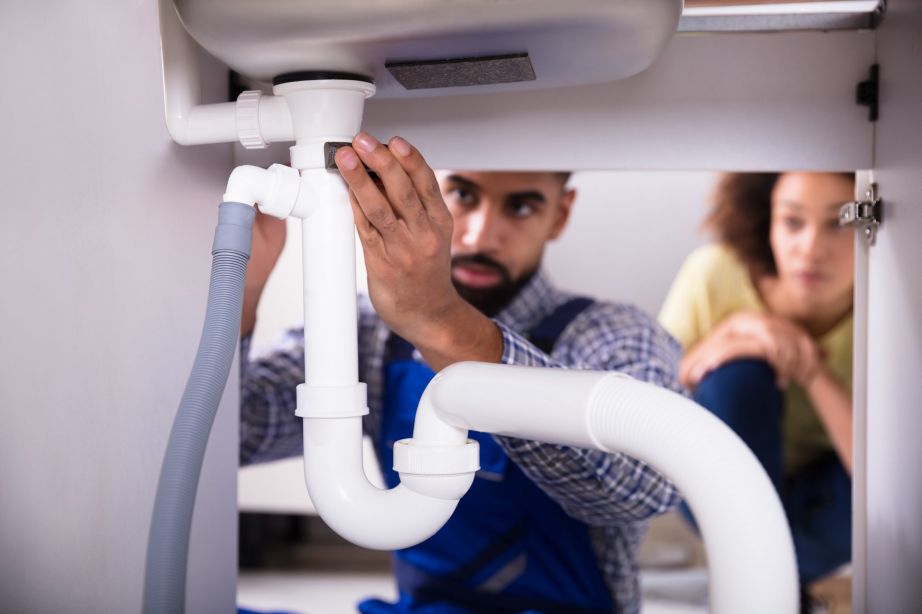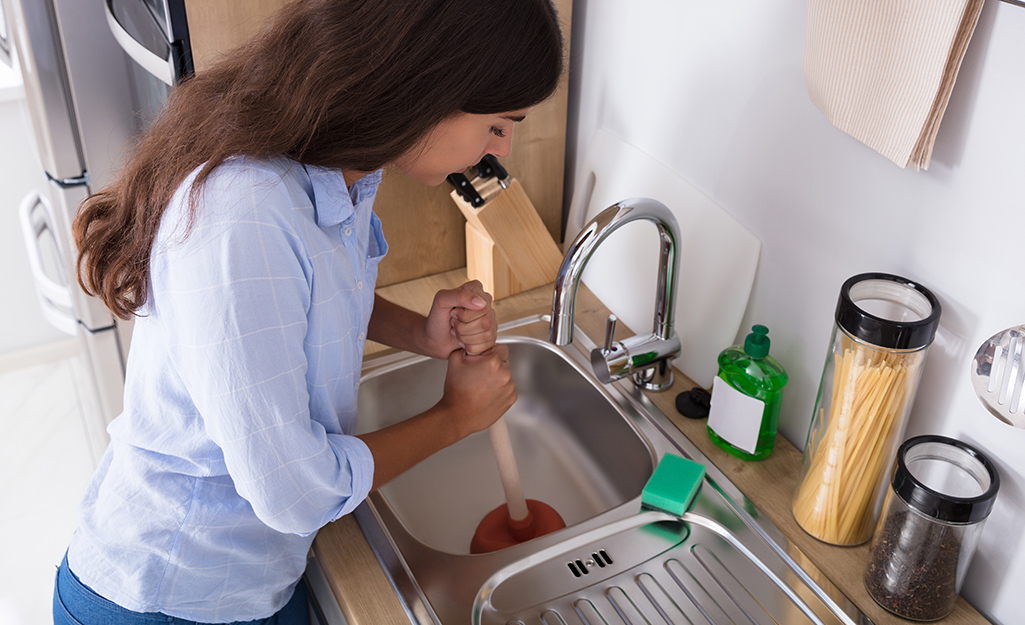Valuable Steps To Fix A Slow-Draining Sink
Valuable Steps To Fix A Slow-Draining Sink
Blog Article
Just how do you actually feel in regards to Solved! How to Fix a Slow Sink Drain?

Intro
We've all been there: You're cleaning your teeth or cleaning your hands, and you discover the water pooling in the sink. As opposed to rapidly swirling down the tubes, it sticks around, turning your once-refreshing morning regimen right into a small overload scene. A slow-draining sink isn't simply annoying; it's typically an indication of larger pipes concerns hiding under the surface area. The good news is that most slow-draining sinks can be fixed with a little know-how, a few standard devices, and some perseverance. Prepared to tackle this job head-on? Let's roll up our sleeves and dive right in.
Understanding the Causes of a Slow-Draining Sink
Prior to you start poking around in your pipelines, it assists to know what could be triggering the stagnation. Comprehending the root cause makes it less complicated to select the right repair.
Usual Offenders Behind Slow Water Drainage
So, what's clogging points up? Usually, it's a blend of everyday debris-- assume hair, soap residue, tooth paste residue, and remaining food fragments. In time, these tiny bits build up and hold on to the pipe walls, slowly tightening the passage and making it harder for water to pass through. In some cases, mineral deposits from difficult water can likewise add to the substance, producing the best tornado for stubborn blockages.
When is it Time to Act?
If you observe the water draining pipes slower than normal, it's a good idea to interfere earlier instead of later. Waiting too long can cause complete blockages, undesirable odors, and even pipe damages. If the water takes greater than a few seconds to clean out after switching off the faucet, consider it a warning and prepare yourself to put on your DIY hat.
Devices and Materials You'll Require
The right devices make all the difference. Thankfully, you will not need a totally stocked plumbing's van to finish the job.
Important Tools for Do It Yourself Repair Works
A plunger is your best beginning factor. A tiny, sink-sized bettor produces suction that can displace minor clogs. For even more relentless clogs, a drainpipe serpent (in some cases called a plumber's auger) works wonders. A set of handwear covers, a flashlight, and possibly a set of safety safety glasses are additionally useful.
Suggested Cleaning Solutions
Light recipe soap and hot water can aid break down greasy accumulation. A blend of baking soft drink and vinegar is a tried and true home remedy, and chemical cleansers provide an even more environmentally friendly strategy. Keep chemical drain cleansers as a last option, as they can be harsh on your pipes.
Security First: Preventative Measures and Prep work
Before you launch into unclogging mode, consider safety and security. You're dealing with potentially dirty water and debris, so slip on a set of handwear covers. If you're utilizing chemical cleaners, guarantee the area is well-ventilated and follow the instructions on the tag.
Safety Gear and Work Area Configuration
Put down some old towels or rags around the sink location to catch splashes. Remove any things that might enter your means, like soap dispensers or tooth brush owners. Make sure you have excellent illumination-- grab a flashlight if required.
Step-by-Step Guide to Taking Care Of a Slow-Draining Sink
Now, allow's enter the nitty-gritty. This detailed process will certainly direct you via easy strategies to restore your sink's drain.
Action 1: Remove and Tidy the Stopper
Typically, the stopper (that tiny plug you push down to block water) is the very first wrongdoer. Remove it carefully and wipe any hair or crud trapped around its base. Wash it thoroughly prior to putting it back in position.
Step 2: Use a Bettor to Remove Particles
Got that bettor all set? Position it over the drainpipe and offer it a few firm pumps. The idea is to create suction that can loosen any blockage. If you see little bits of debris floating up, you get on the ideal track.
Step 3: Try a Drainpipe Snake or Wire Wall Mount
If the bettor doesn't do the trick, it's time to draw out the drain serpent. Carefully feed it into the drainpipe and spin as you go. You could really feel some resistance-- that's likely the blockage. Maintain turning and drawing till you remove the obstruction. If you don't have a drainpipe snake, a straightened wire wall mount can work in a pinch.
Tip 4: Apply a Do It Yourself Drain Cleanser
A natural cleaner made from cooking soft drink and vinegar can break down residual grime. Pour half a mug of baking soda right into the drainpipe, adhered to by half a cup of vinegar. Let it fizz for around 15 mins, after that flush with warm water. This chain reaction typically does marvels for minor blockages.
Tip 5: Rebuild and Examine the Sink
Placed everything back together and run the faucet. Does the water now swirl down the drain at a reputable rate? If yes, offer on your own a pat on the back. If not, don't anguish-- there are still a couple of even more dress up your sleeve.
Alternative Approaches for Stubborn Clogs
Not all blockages are produced equal. If your sink still rejects to cooperate, consider these different remedies.
Sodium Bicarbonate and Vinegar Technique
We already discussed this, however it's worth keeping in mind once again. This gentle, eco-friendly technique is safer than chemical cleansers and typically quite efficient.
Enzymatic Drain Cleansers
Enzyme-based cleansers utilize all-natural bacteria to digest raw material. They're a superb option if you're aiming to avoid extreme chemicals. Simply keep in mind, they might take a bit longer to work their magic.
Chemical Drain Cleansers: Benefits And Drawbacks
Chemical cleansers can blow up with challenging blockages fast, however they're not without downsides. They can create warm and fumes, damages pipelines if made use of excessively, and position environmental risks. Utilize them sparingly, and always adhere to the instructions meticulously.
Safety Nets to Keep Your Sink Flowing
Avoidance is the most effective treatment. By embracing a few simple practices, you can keep your sink from reducing in the first place.
Regular Cleansing Practices
Wipe down the sink container and fixture location consistently. Eliminate hair or food fragments prior to they have a possibility to wash down the drain.
Preventing Unsafe Materials Down the Drain
Hesitate before disposing coffee grounds, oil, or coarse vegetable scraps down the sink. These perpetrators hold on to pipe walls, producing clogs in time.
Regular Upkeep Checks
Arrange a fast month-to-month evaluation. Run hot water with the sink for a few mins, taking note of the flow. If it seems sluggish, act fast before it ends up being a full-blown blockage.
When to Call a Professional Plumbing Technician
Occasionally, regardless of just how tough you attempt, that obstruct simply won't budge. That's when it's time to generate the pros.
Indicators That Indicate a More Serious Problem
If your sink drains pipes gradually despite multiple efforts, or if you notice water supporting in various other components (like your shower or toilet), you may have a more significant pipes issue hiding deeper in the system.
Balancing Do It Yourself Initiatives with Professional Help
While do it yourself can save you cash and offer a feeling of achievement, there's no shame in calling a specialist. An expert plumbing can analyze your entire pipes setup, guaranteeing there's no underlying damages or long-term issue that could cost you a lot more later on.
Comparing Costs and Long-Term Solutions
Prior to choosing, take into consideration the big picture. A cheap, quick fix may resolve the trouble momentarily, but buying a more irreversible solution might conserve you money and stress in the future.
Considering the Expenditures of DIY vs. Specialist Solutions
DIY solutions typically set you back bit more than the price of a bettor or a container of baking soda. Professional solutions, on the other hand, featured a price however might avoid repeated issues and expensive repair work later on.
Investing in Top Quality Fixtures and Upgrades
If your sink's style adds to frequent obstructions, it might be worth upgrading to higher-quality fixtures or altering the pipes design. Consider this an investment in your house's functionality and comfort.
Conclusion
A slow-draining sink can feel like a small inflammation, yet it's commonly an indication that your plumbing requires a little TLC. By recognizing the origin, using the right tools and techniques, and dedicating to basic safety nets, you can maintain your sink streaming easily. And when all else fails, never think twice to employ a specialist-- your home's plumbing deserves the investment in care and upkeep.
Three Common Ways to Fix a Slow Drain
Baking Soda Method
Boil a full pot of water. Measure out cup of baking soda and pour it down the drain. Then take cup of the magical cleansing substance known as white vinegar and drop that down there too. Allow the mixture to fizz in the drain for five minutes as the vinegar and baking soda combine. Now dump in that whole pot of boiling water. This combination of cleaning substances should clear out anything that is causing your sink to drain slowly. If it doesn t...
Zip-It
If the baking soda method doesn t clear out your drain, it may be because a significant amount of hair and/or other debris has collected there and you need to remove it. Purchase a Zip-It tool at any home improvement or hardware store and insert it into your drain. It will catch any collected hair or debris that s blocking the flow of water. Pull it out. If it s got a big clump of hair, etc. on the end, you ve probably got your culprit.
Drain Cleaner
If these methods don t work, there is the standard drain cleaner that you can also buy in a hardware store or even your local grocery store. It s better if you can use a household solution, but these drain cleaners often work in a pinch. They re very simple to use. You generally just dump them in your drain and wait. If even this method is not effective, it may be time to call the plumber.
https://www.mrrooter.com/oneida/about-us/blog/2017/july/three-common-ways-to-fix-a-slow-drain/

I came across that blog posting on Solved! How to Fix a Slow Sink Drain while doing a search on the web. In case you appreciated our article please make sure you remember to share it. Thanks for your time. Return soon.
Book Inspection Report this page